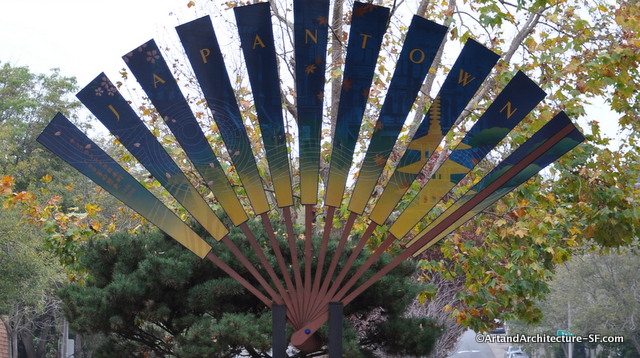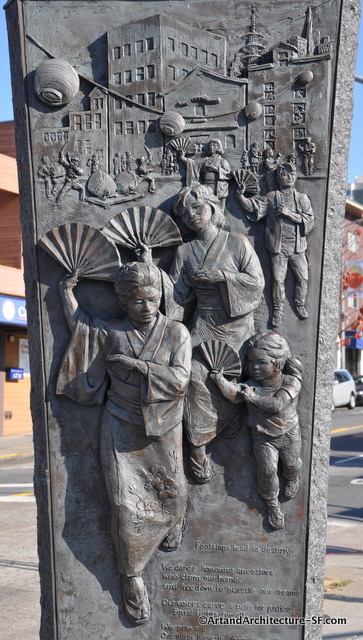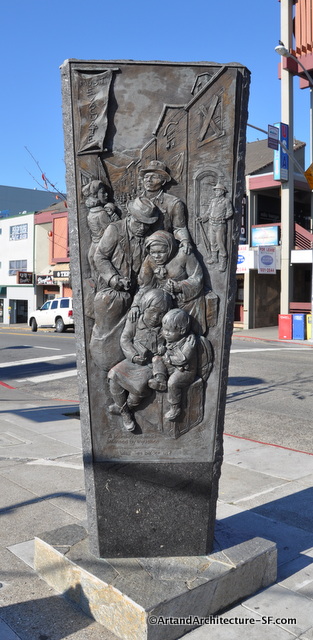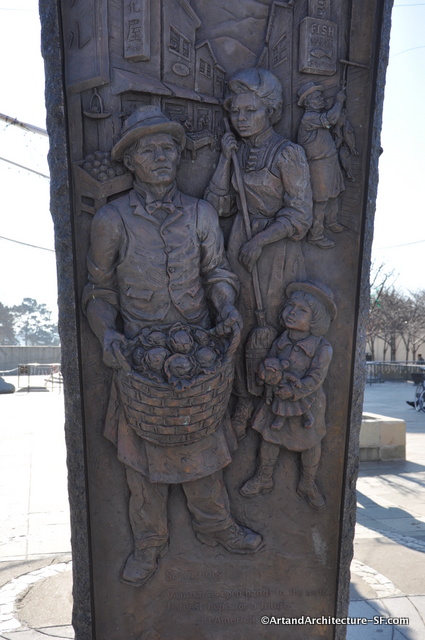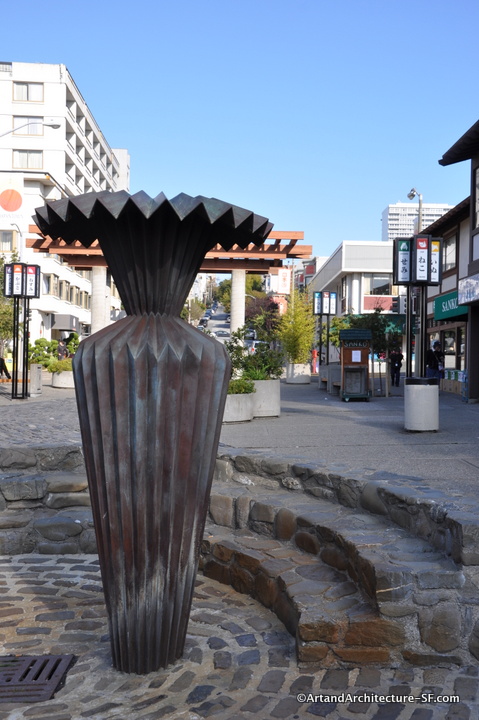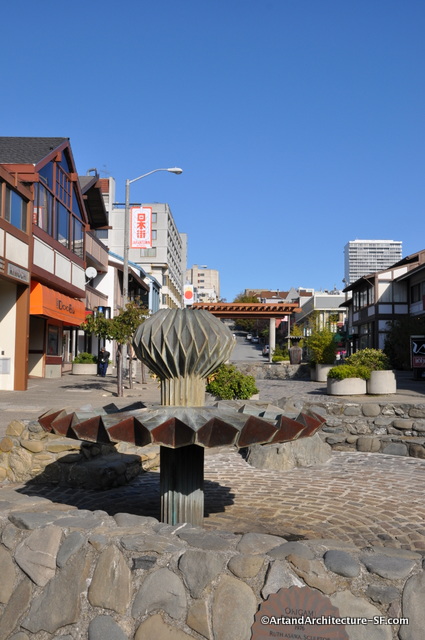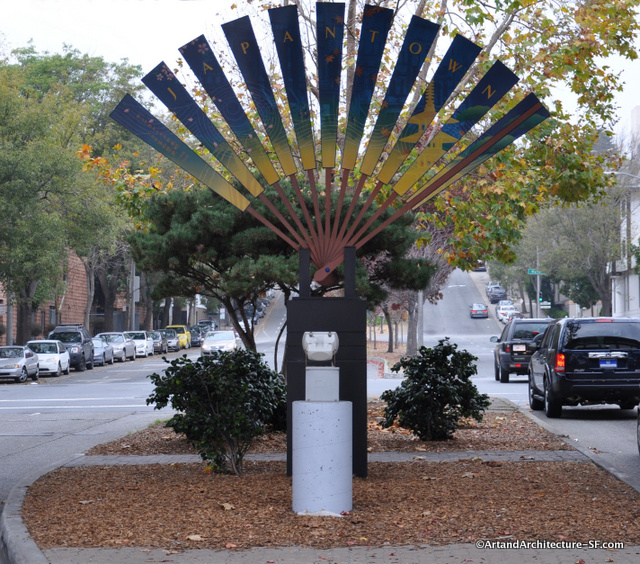 There is a plaque near this fan – or Sensu – and this is what it reads:
There is a plaque near this fan – or Sensu – and this is what it reads:
The Japantown Sensu (fan) is a modern interpretation of traditional Japanese forms blended with the unique Japanese American culture that has existed, persisted and grown in San Francisco’s Nihonmachi since 1906.
Invented in Japan 1300 years ago, the sensu is a palette for artists, an instrument of dance and drama, a graceful and practical part of everyday life. It is an important link to our Japanese culture and continues to be used in the Japanese American community.
Elements of the Design
The design of the Sensu incorporates key elements from Japantown:
• Peace Pagoda – Designed by Yoshiro Taniguchi, the Pagoda was donated by the people of Osaka,
San Francisco’s Sister City, in 1968.
• Origami Fountain – One of the two sculptures inspired by Japanese paper folding, designed by Ruth
Asawa. ((Found on this blog here))
• Mountain stream motif – Architect Rai Okamoto designed this pattern as the setting for the Buchanan
Mall.
The four seasons are represented by traditional Japanese plant motifs:
• Sakura – The springtime cherry blossom is a symbol of the beauty and impermanence of life.
• Ayame (Shobu) – The summer iris flower symbolizes feminine beauty, its leaves masculine strength and
courage.
• Momiji – The autumn maple leaves evoke the flow of time.
• Matsu – The evergreen pine symbolizes strength and longevity.
Original concept and Sensu design by Tony Kaz Naganuma, Grace Horikiri and Karen Kai of NDD Creative, Japanese calligraphy by Mutsuyo Horikiri, former principal of Kinmon Gakuen Japanese Language School.
